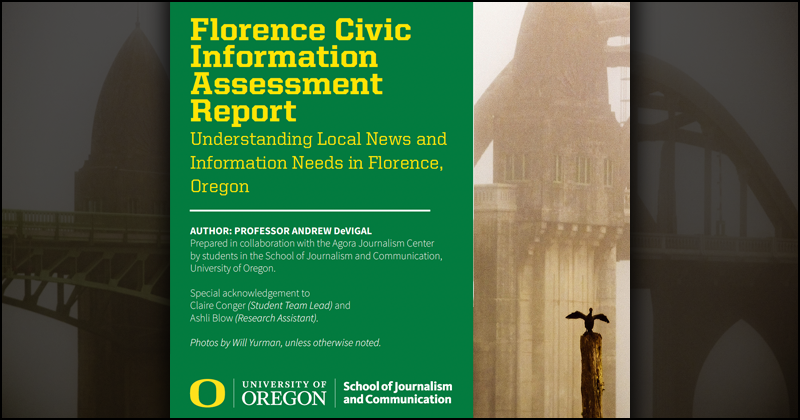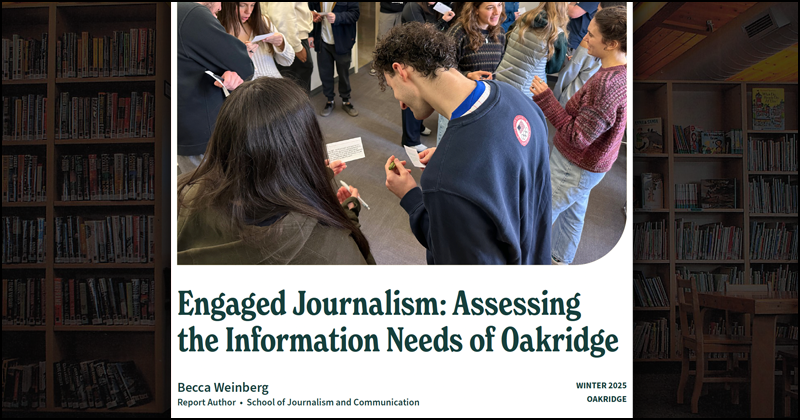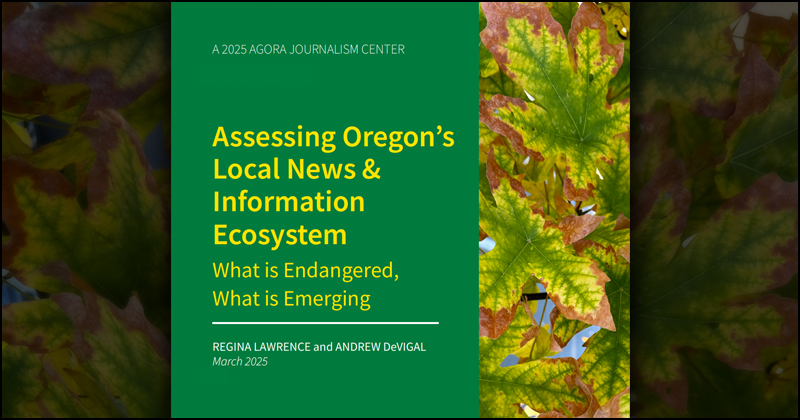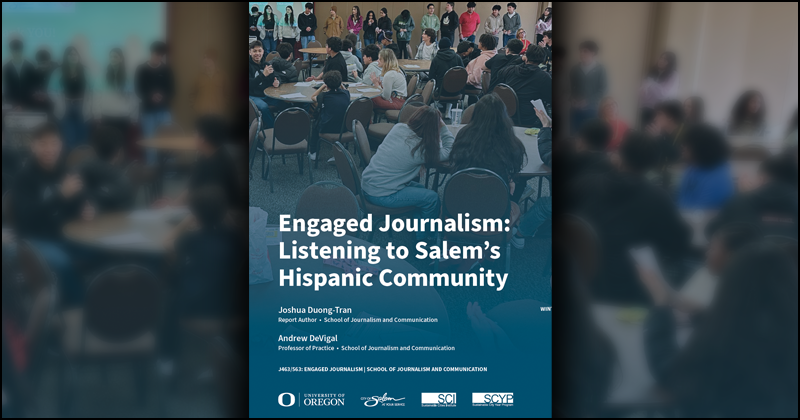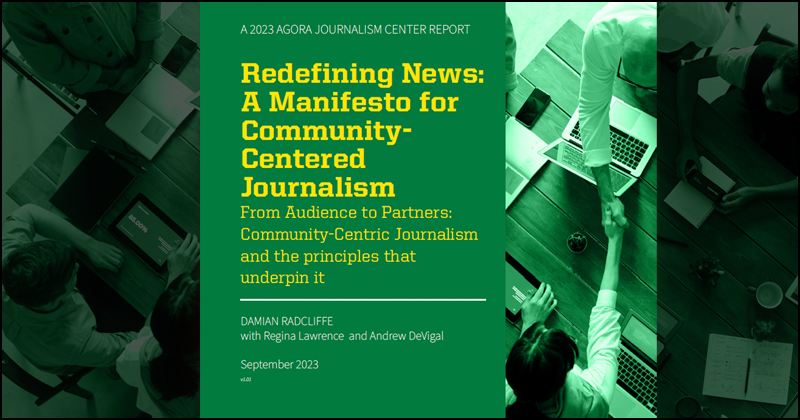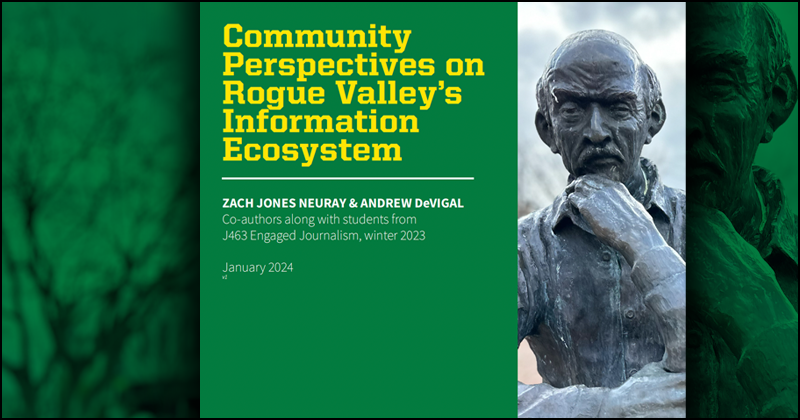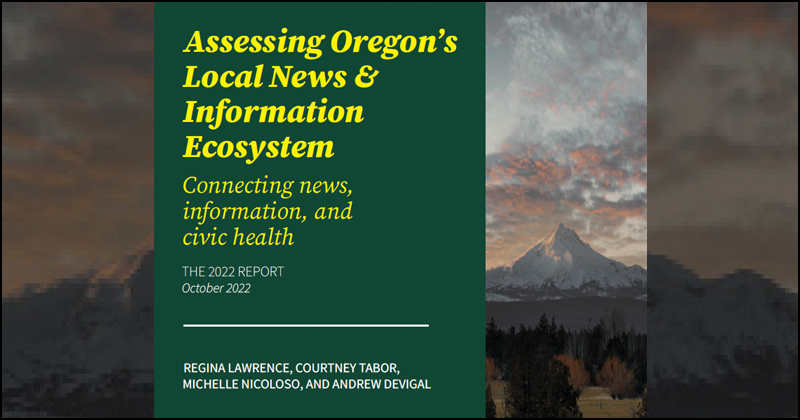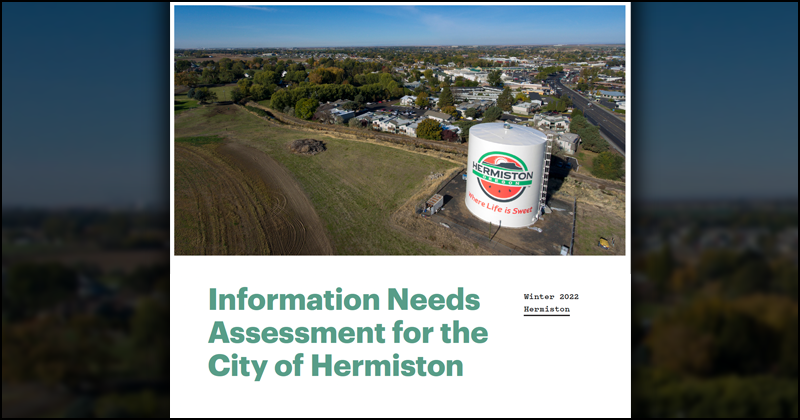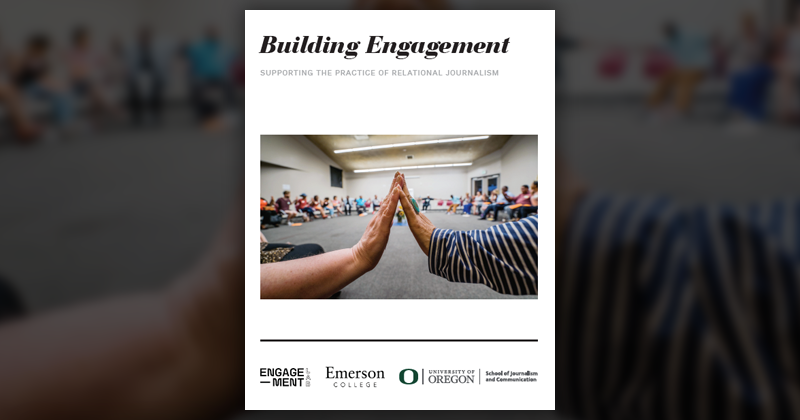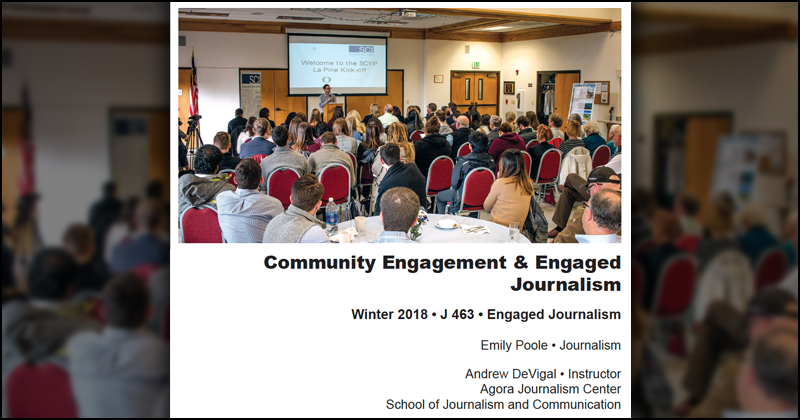With a population that skews older and a patchwork of information channels—ranging from Facebook groups to library bulletin boards—Florence faces the challenge of keeping residents informed without a single, consistent hub. The project, conducted by University of Oregon students, included a co-designed survey with 106 responses, a well-attended listening session, and weekly planning meetings with community partners.
The closure of the Dead Mountain Echo in 2020 and limited capacity of the Highway 58 Herald have left Oakridge relying heavily on Facebook, word of mouth, and bulletin boards. While residents expressed deep pride in their community, they voiced frustration over fragmented, biased, or outdated information.
This 2025 report builds on our 2022 assessment, providing an updated snapshot of Oregon’s evolving local news landscape—highlighting challenges, emerging solutions, and key initiatives shaping the future of civic information in our state.
Guided by the Listening Post Collective’s Playbook, the team conducted a bilingual survey, held a listening session with 80 students, and visited community gathering spaces. The assessment revealed that while residents—especially youth—are highly connected through personal networks, social media, and local Spanish-language radio, there remain gaps in access to trusted, timely, and bilingual civic information.
This forward-thinking report makes the case for embracing a more inclusive, community-focused model of journalism, one that prioritizes listening to and collaborating with communities to produce relevant, equitable and impactful news and storytelling. The report features an actionable framework to put the principles of Community-Centered Journalism into practice and explains how this approach differs from traditional models of journalism, with potential benefits including rebuilding trust, tackling inequities, and fostering civic engagement.
The study revealed a community deeply interested in local events, politics, and safety, yet hampered by a fragmented and uneven information landscape. The closure of the Medford Mail Tribune in 2023 left a significant gap, prompting the emergence of new outlets like the Rogue Valley Times and the expansion of existing media.
This report represents one step toward assessing the state of local news in Oregon and what can be done to strengthen it. Counting and mapping Oregon’s local news producers will track further changes. And by looking at initiatives underway around the country, Oregon’s newsrooms, educators, funders, and policy-makers can consider emerging innovations to build the vitality of Oregon’s local news that mean communities’ information needs.
Through surveys, site visits, and facilitated conversations, students explored how residents get and share local news, what sources they trust, and where information gaps exist. Overall, residents rated themselves as fairly well informed. Facebook—especially the “What’s Happening in Hermiston” and “NEW What’s Happening in Hermiston” groups—was the most frequently used source for local updates, though trust in it was mixed.
At a time when journalists are grappling with eroding trust in media and finding new ways to build connections with the communities they serve, we offer a concrete way of talking about and documenting relational engagement.
Through a community-wide survey, stakeholder interviews, and listening sessions, the project aimed to identify strengths, gaps, and opportunities in La Pine’s information ecosystem. The findings revealed that while residents value staying informed—particularly on local events, public safety, and community development—there is no single, centralized source of information.
